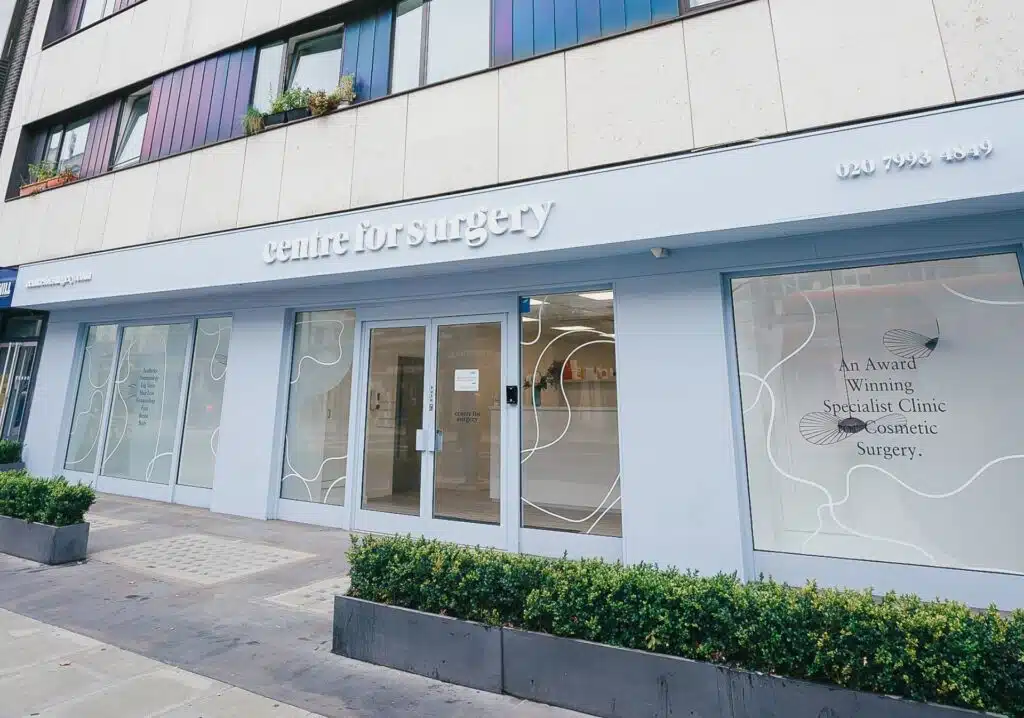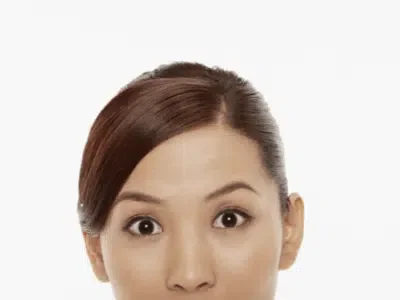Blepharoplasty, also known as eyelid surgery, eyelid reduction, or eye lift, is a cosmetic surgery procedure designed to remove excess skin and fat and improve the appearance of the eyelids. This procedure is commonly requested at Centre for Surgery and is an effective technique for reducing signs of ageing affecting the upper and lower eyelids, and to get rid of drooping eyelids and bags under the eyes.
Many people are increasingly aware of the benefits of blepharoplasty surgery, and it is no surprise that the procedure ranks behind only breast enlargement and breast reduction surgery as the third most commonly requested cosmetic surgery procedure in the UK.
As with any invasive surgical procedure, blepharoplasty surgery involves certain risks and complications. In the hands of an expert, eyelid reduction surgery is a safe and effective procedure. A well-recognised side-effect of eyelid surgery is the development of dry eyes postoperatively. This can affect up to 25% of all people who have eyelid reduction in the UK. For individuals who already experience dry eyes, there is a small risk that the condition may become increasingly symptomatic after cosmetic eyelid surgery.
RELATED: What Does Eyelid Surgery Involve?
What is dry eye syndrome?
Dry eye syndrome is a well-recognised medical condition that affects the eyes, leading to the development of specific symptoms such as grittiness, itchiness, blurry vision, discomfort or photosensitivity. Also known as dry eye disease, the condition develops when the lacrimal glands undersecrete tears, which leads to a dry surface on the cornea. The condition may also develop when tears prematurely evaporate from the surface of the eye. In a small number of cases, individuals who undergo blepharoplasty surgery may experience an exacerbation of dry eye syndrome symptoms. In very rare cases, symptoms of dry eye syndrome may become permanent after eyelid reduction surgery. Eyelid surgery is designed to surgically remove excess fat and skin, while simultaneously tightening the underlying muscles surrounding the eye to combat the signs of ageing. These normal anatomical structures play an important part in the normal functioning of the eyelids. Excessive removal of skin and fat may impair a person’s ability to blink normally. This may fail to secrete tears from the lacrimal glands to lubricate the surface of the cornea adequately.
Any type of eyelid reduction surgery may result in the development of dry eye syndrome, even in individuals who have never experienced symptoms of the condition before. We would recommend asking your surgeon about the potential risks of dry eye syndrome at your consultation before making an informed decision on proceeding with eyelid surgery.
Who is at risk of developing dry eyes after eyelid reduction surgery?
Having both upper and lower eyelid surgery carried out in the same procedure increases the risk of dry eye syndrome. Dry eye disease, or dry eye syndrome, is most commonly found in those over 50 and contact lens wearers. Those who perform visually intensive tasks such as computer work, and those who smoke and drink alcohol may be at higher risk of developing dry eyes after blepharoplasty. Several chronic medical conditions, such as Sjögren syndrome, blepharitis, or lupus, can result in dry eyes. Some medications place people at increased risk of developing dry eye syndrome, including antihypertensives and drugs used to treat depression.
The oral contraceptive pill may result in hormonal imbalance, and this could result in an increased risk of developing dry eyes after a Blepharoplasty. Menopause may also be a causative factor, similarly related to hormonal fluctuations.
A person’s medical history may also be a contributing factor in the development of dry eyes after eyelid surgery. Recognised conditions include autoimmune thyroid disease and congenital or acquired defects of the lacrimal gland or tear ducts. Eyelids come in a variety of shapes, and those with a more bulging shape may be at a higher risk of experiencing dry eyes as a side effect of blepharoplasty.
What are the best treatments for dry eye syndrome after blepharoplasty?
In the vast majority of cases, symptoms of dry eyes after blepharoplasty are temporary and mild in nature. Most people with dry eye syndrome will notice their symptoms disappear after 2 to 3 weeks following surgery. Certain treatments can be used to manage symptoms, including topical ointments or lubricating eyedrops. The risk of developing dry eye syndrome after a blepharoplasty can be minimised by following your surgeon’s post-operative care instructions in full.
Topical ointment applied after surgery often results in mild blurry vision. We advise you against driving and to remain at home whilst you actively apply the topical ointment after eyelid surgery. This will help ensure your recovery is smooth and complication-free. In rare cases, symptoms of dry eyes may persist for more than 12 weeks, necessitating a medical assessment to investigate the condition further. Occasionally, patients may need to use disposable contact lenses to maintain eye hydration, and a corrective surgical procedure may be required to improve tear production. Dry eye syndrome may be a permanent complication after eyelid surgery in sporadic cases.
Your surgeon will carefully assess you at your consultation to determine your risk of developing dry eye syndrome after blepharoplasty surgery. If you have several risk factors for developing dry eyes after eyelid surgery, other treatment options may be recommended, including anti-wrinkle injections and dermal fillers, including tear trough filler. Although these temporary treatments need to be repeated regularly to maintain the results, they can be an ideal solution for patients who would otherwise be at risk of developing dry eye syndrome after eyelid reduction.
When you have your consultation at Centre for Surgery in London, our surgeons will discuss the potential risks and complications of eyelid reduction surgery to help you determine the most appropriate treatment option. In most cases, blepharoplasty is an excellent treatment for addressing the signs of ageing affecting the upper and lower eyelids. Centre for Surgery is home to some of the most skilled consultant plastic surgeons in the UK, who have expertise in both upper blepharoplasty and lower blepharoplasty. You can be assured of receiving very high standards of medical care at our state-of-the-art surgical facility located on Baker Street in central London.
If you would like to book a consultation to learn more about blepharoplasty, please contact us today at 020 7993 4849 or complete the contact form below to speak with one of our friendly and knowledgeable patient coordinators.










